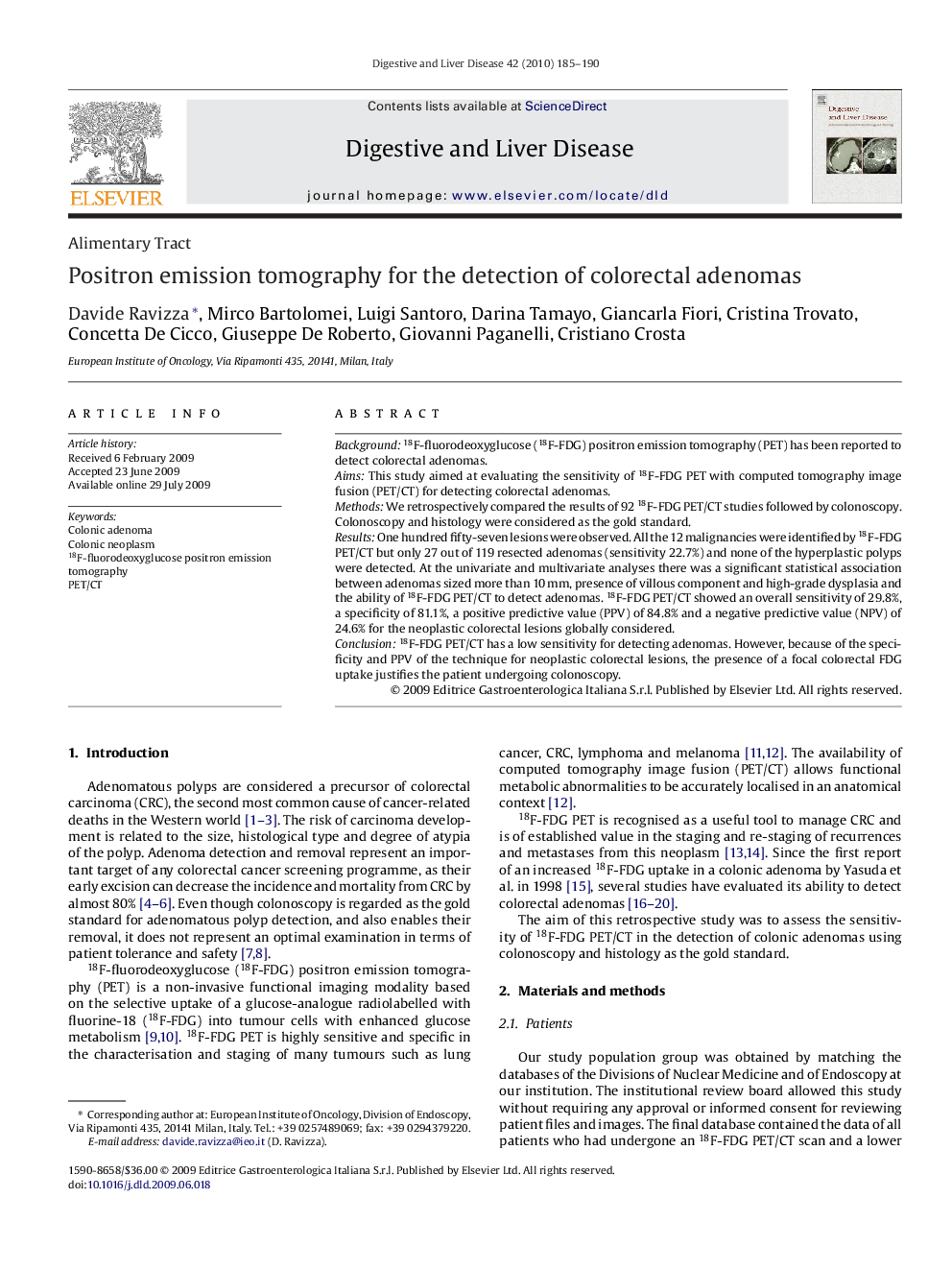| Article ID | Journal | Published Year | Pages | File Type |
|---|---|---|---|---|
| 3263909 | Digestive and Liver Disease | 2010 | 6 Pages |
Background18F-fluorodeoxyglucose (18F-FDG) positron emission tomography (PET) has been reported to detect colorectal adenomas.AimsThis study aimed at evaluating the sensitivity of 18F-FDG PET with computed tomography image fusion (PET/CT) for detecting colorectal adenomas.MethodsWe retrospectively compared the results of 92 18F-FDG PET/CT studies followed by colonoscopy. Colonoscopy and histology were considered as the gold standard.ResultsOne hundred fifty-seven lesions were observed. All the 12 malignancies were identified by 18F-FDG PET/CT but only 27 out of 119 resected adenomas (sensitivity 22.7%) and none of the hyperplastic polyps were detected. At the univariate and multivariate analyses there was a significant statistical association between adenomas sized more than 10 mm, presence of villous component and high-grade dysplasia and the ability of 18F-FDG PET/CT to detect adenomas. 18F-FDG PET/CT showed an overall sensitivity of 29.8%, a specificity of 81.1%, a positive predictive value (PPV) of 84.8% and a negative predictive value (NPV) of 24.6% for the neoplastic colorectal lesions globally considered.Conclusion18F-FDG PET/CT has a low sensitivity for detecting adenomas. However, because of the specificity and PPV of the technique for neoplastic colorectal lesions, the presence of a focal colorectal FDG uptake justifies the patient undergoing colonoscopy.
